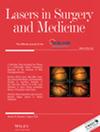Cutaneous Immune Responses to Ablative Fractional Laser, Heat- and Cold-Based Dermatological Procedures
Abstract
Objective
Physical treatment modalities, such as ablative fractional laser (AFL), electrocautery, and cryotherapy, are extensively used in the field of dermatology. This study aimed to characterize the short-term innate and adaptive immune responses induced by AFL compared with heat- and cold-based procedures.
Materials and Methods
Innate (CD11b+Ly6G+ neutrophils) and adaptive (CD8+CD3+ T cells) immune cell infiltration and histopathological changes were examined in murine skin on Days 1 and 7, following AFL, monopolar-electrocautery (RF), thermocautery, and cryotherapy. Interventions were standardized to reach the reticular dermis. Clinical skin reactions were photo-documented daily. As a comparator, the adaptive immune response was examined in murine basal cell carcinomas (BCC) on Day 7 after AFL exposure.
Results
Baseline histopathology confirmed immediate deep dermal tissue impact by all procedures. Immune cell dynamics varied across treatments throughout the progression of clinical and histopathological responses. On Day 1, AFL and heat-based procedures triggered an innate immune response, characterized by CD11b+Ly6G+ neutrophil cell infiltration that correlated with histopathological findings and immediate onset of clinical skin reactions. In addition, heat-based procedures led to an increase in overall dermal CD45+ cells (Day 1), which continued to rise for AFL and RF-electrocautery at Day 7 posttreatment. On the contrary, cryotherapy did not induce immediate (Day 1) innate immune responses, but instead a delayed increase in neutrophil and CD45+ cell infiltration (Day 7), which coincided with the late onset of clinical reaction. CD3+ T cells and CD8+CD3+ T cells demonstrated a similar pattern, with an increase observed for heat-based procedures on Day 1 and a delayed increase for cryotherapy on Day 7. Distinctive for AFL-treated skin, the level of dermal CD3+ T cells increased over time, significant by Day 7, and AFL-treated mouse BCCs responded with increased CD8+ T cell infiltration at Day 7 posttreatment.
Conclusion
Heat- and cold-based procedures developed distinct cutaneous immune responses, with cryotherapy resulting in a delayed response compared to immediate immune responses from heat-based procedures. The substantial T cell response induced by AFL in the skin and BCC tumors indicates a potential for AFL as an adjuvant in immunotherapeutic treatments of keratinocyte cancers.

 求助内容:
求助内容: 应助结果提醒方式:
应助结果提醒方式:


